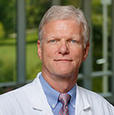The heresy of one age becomes the orthodoxy of the next.
-Helen Keller
The patient returned to my clinic several years after her original thyroid cancer surgery. “The cancer blood test never went completely back to zero,” she told me.
“We knew there was cancer in there somewhere. Finally, the new ultrasound machine found it! I guess it is time for more surgery!”
I guess. In my patient’s situation, the latest high resolution diagnostic test had identified a slowly growing, small cancer. However, there are no studies to show that taking out these small cancers has any significant, long-term impact. At two national meetings I attended in the past few weeks, surgeons from all around the world scratched their heads and debated the merits of aggressive surgery versus careful observation without coming to any conclusions.
Two recent papers help point to why this is such a difficult topic.
The first study, titled “Overdiagnosis in Cancer” published in the Journal of the National Cancer Institute, makes a very convincing argument that screening and very early detection can often identify cancers that would otherwise have never caused any problems. As evidence, the investigators demonstrate that the number of people who develop some types of cancer (prostate, thyroid, breast, kidney, and melanoma) has doubled since 1975 with no increase in the number of people dying from these types of cancer. Further, they cite autopsy studies of people dying of non-cancer diagnoses that have detected tiny, harmless cancers in as many as one-third of people. Chasing down and treating these “overdiagnosed” cancers carries both risk and cost. An accompanying editorial notes that policies must “reduce the burden of cancer death AND cancer diagnosis.”
The second study looks at the rapid growth in the use of follow-up scans in older cancer patients (mean age = 76). The paper, published in the Journal of the American Medical Association, found that the use of PET scans grew 36% to 54% each year between 1999 and 2006 for Medicare patients with cancers of the prostate, breast, colorectum, lung, as well as leukemias and non-Hodgkin’s lymphomas. For the lung cancer patients, there was a 14-fold increase in the use of PET scans over the seven years! Other tests grew at a slower rate. The overall cost of imaging grew at 5% to 10% each year.
So, what does this mean? Despite the continuing good news that fewer Americans are dying of cancer each year, there are more and more people being treated, thanks to sophisticated screening procedures capable of detecting smaller and smaller abnormalities. At least some of these smaller cancers would have been harmless. At the same time, spending on scans and other imaging studies is growing much faster than inflation. The growth rate in expenses contributes to the spiraling costs of medical care.
Some things that we always felt were “true” about cancer deserve another look. We were all raised to believe that cancer, left untreated, was uniformly fatal. We always knew that small cancers are more curable. For many people, these statements are certainly true.
For other people, though, it is equally true that cancer is more of a chronic disease, like hypertension or diabetes. It is also true that many of us have cancer and will never, ever know it. The data call for changes in how physicians and people with cancer understand what the diagnosis means.
Change might be great for society, but what about each individual? Will we tolerate having less care? Witness the recent upheaval over the evolving recommendations for mammography in younger women. What patient, knowing that he or she might have a cancer inside, would ever agree to just let it be?
When the door to the examination room closes, we sit with our patients and make decisions. Do we operate? Do we watch? Do we order a scan or don’t we? Do we try something else? As much as we love certainty, there are times when we proceed based on the available research and our best guesses.
My patient elected to have surgery to remove the tiny recurrence knowing that there were real risks to the surgery and that there might be no benefits. I was never convinced that what we did made a difference in her long-term prognosis, but I certainly hope it was money well spent.
The following is feedback received for this blog:
And, we surgeons are not in this alone. Our non-surgical colleagues eagerly participate with us in the quest to find the "biochemical recurrence". Stimulated thyroglobulin high, thyroid scan negative, PET scan positive in the neck, tell the patient, then call the surgeon. . .the dye is cast before that exam room conversation can take place. (Just attended an endocrine TPC yesterday with this scenario). Our hardest work is often not the operation, but NOT carrying out the operation. . .
- Merry Sebelik
good provocative piece. i wonder how many of us would elect not to have the surgery, knowing there was "something" in there?
- RICHARD HOLLOWAY
From a holistic patient perspective, is neglecting a proactive approach toward diagnosis of disease appropriate? Is the failure to follow through or complete treatment truly caring for the whole patient? Is our goal, as health care providers, to simply treat disease or provide holistic care for our patients? Should we being doing so in a non-discriminatory fashion and is it ever appropriate to take those privileges away? I wonder how many patients could sleep at night and continue to live a "normal life" knowing they have cancer residing inside of them. I agree we must reduce health care expenditure, but at what cost? Interesting, thought provoking article! Thank you Dr. Campbell.
- Pam P
Ironic, Hellen Keller was an anarchist
